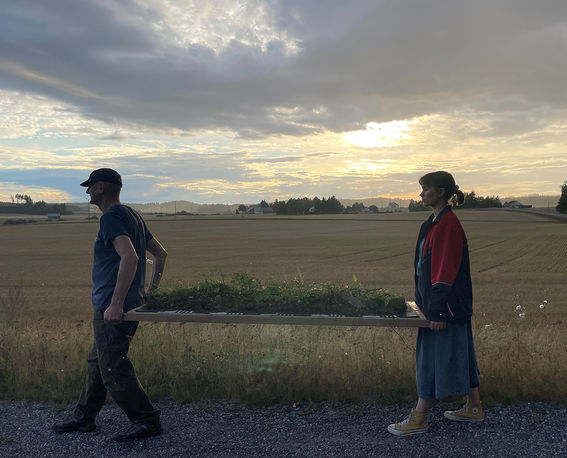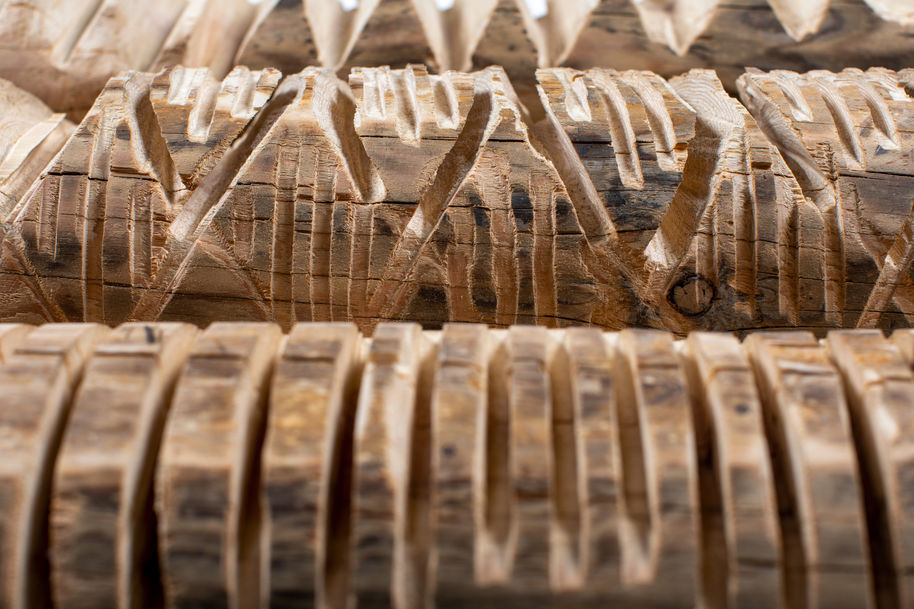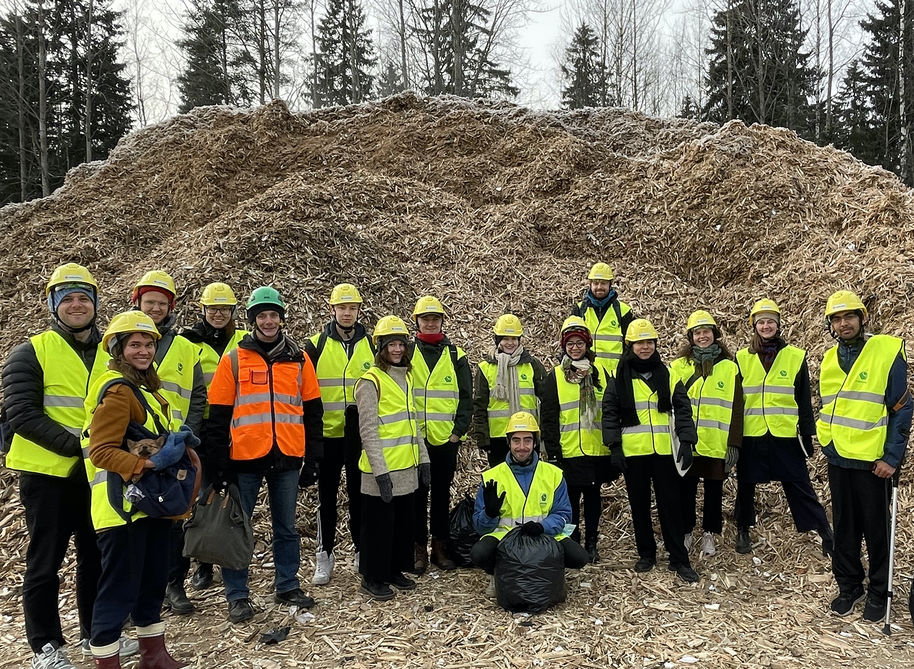Wood Material Technology
Group led by Professor Mark Hughes

We need to ensure long-term forest sustainability and one good way to do this is to reduce the demand for primary wood by being as resource efficient as possible through re-use and cascading of wood products.
The exhibition tackles the circularity of wood materials and highlights its value and potential through all the cascading phases. Six projects made using demolition waste wood in the form of panels (1200x1200 mm), created during the 2021 study course Re-imagining Wood Waste, are featured in this exhibition.
In the course, students from different disciplines and backgrounds formed teams to utilise their diverse expertise. The course was part of the Waste Wood for Good Nordic collaboration exploring opportunities of waste wood.
Learn more about the Waste Wood for Good Nordic collaboration

Tuesday 27.9.2022 at 17:00–19:00 on Aalto University Campus.
Registration open until 12 pm, 27.9.2022
Join us and participate in a live discussion about how society values the role of forests and how we might re-think our perception of what we regard as (wood) waste in our resource-constrained world. The event is hosted by Saara Kantele and Mark Hughes.
Saara is a Helsinki based architect and designer who works with her office, Studio Kantele, and collaborates with Aalto University. Her projects are focused on wood and forest research, at different scales and with different perspectives from architecture and furniture to bio- and fibre materials.
Mark is professor of wood technology at Aalto University who studies the role of wood and bio-based materials in sustainable construction. His research interests encompass the potential of wood in construction as a means of fighting climate change and its resource-efficient use through cascading.
Buildings and building construction have an immense impact on the planet, being responsible for around half of the materials used by humanity. Moreover, accounting for almost 50% of the waste generated in the EU, construction and demolition waste is a massive, poorly-utilised resource that needs to become an increasingly important source of material in the near future, not just because of EU regulations and raising costs for virgin materials and waste management, but also because it simply does not make sense to waste these valuable resources!

Nevertheless, although wood is our most abundant renewable building material, we need to use it thoughtfully to balance environmental benefits of the forests with benefits from the material use. The use of wood should be sustainable in the material quantities as well as manner of forestry. The current use of forests is connected to eg. topical severe biodiversity loss due to diminishing habitats at home and abroad. Forests have great potentiality to store carbon and balance the climate, and diverse forests offer us resilience for adapting to climate change.
Wood stored in building stock and currently used in building construction constitutes a significant material resource that could be utilised in new buildings and products if we were to recover it and use it effectively by the means of cascading from high-value products to lower steps of cascading. In this way the wood material potential could be used multiple times. Along with the important act of prolonging the life of buildings and objects made of wood, this would help reduce the pressure on forests. Thus helping them maintain the healthy ecosystems and biodiversity crucial to our planet.
Why don’t we do this? Perhaps because we do not yet fully appreciate the value of this resource – we need to rethink our relationship with the material wood, alongside how we define and value forests. Importantly, we need to change our perception of what we regard as “waste” and start to consider wood as a truly valuable material.

Around 4 billion cubic meters of round wood are removed from the world's forests annually. While not all of this is used for industrial applications, global production of sawn wood and wood-based panels was approximately 845 million cubic meters in 2019. These products are typically used in long-lived applications, such as building construction, thus representing a valuable store of wood material. If a proportion of this material were to be recirculated, this would reduce the need to harvest virgin forest, which is seen problematic in the current scale home and abroad, being connected to e.g., biodiversity loss and decreased ecosystem services.
It is estimated that over 200 000 tonnes of waste wood is generated in Finland every year. Should we be able to establish an efficient cascading system around this material stream, and recirculate a proportion of the material instead of current burning, it would present a significant source of wood material to be used in building and other long term functions, thus decreasing the pressure to virgin harvesting, leading to greater long-term carbon storage and substitution benefits.

Team 1
Jason Selvarajan, MA Creative Sustainability
Neha Sharma, MA in Chemical, Biochemical and Materials Engineering, Functional Materials
Team 2
Paul Mesarcik, MA Creative Sustainability
Satyaki Roy, MA Creative Sustainability in Materials and Chemical Engineering
Team 3
Jenny Jacobsen, Exchange studies, Collaborative and Industrial Design (ARTS)
Otto Joutsiniemi, Kemian tekniikan BA ja MA
Team 4
Aarni Tujula, MA in Contemporary Design
Janika Hart, MA in Chemical, Biochemical and Materials Engineering, (BA Bio- ja kemiantekniikka)
Team 5
Marikki Nygård, BIZ: MA in Creative Sustainability, Background with Forest sciences
Amanda Barlebo, Exchange studies, New Media (ARTS)
Team 6
Felix Dingeldein: Exchange studies, Architecture (ARTS)
Lukas Schuck: MA Creative Sustainability in Materials and Chemical Engineering



Group led by Professor Mark Hughes

Designs for a Cooler Planet is a five-week-long festival celebrating experiments in planet-friendly materials, fashion, and food.

Planet-friendly alternatives for materials, mindsets and architecture.